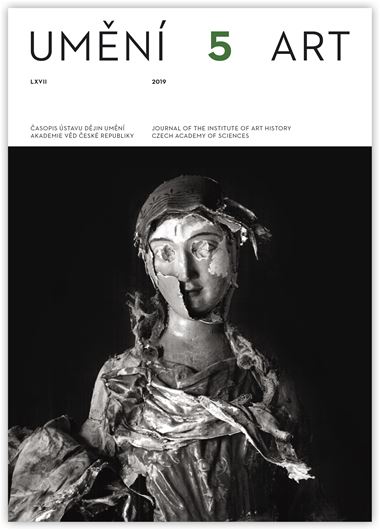Zdeňka Míchalová – Matěj Kruntorád
The Madonna from Velké Meziříčí between the Reformation and Restoration
This study deals with the ‘second life’ of the Madonna of Velké Meziříčí, a gothic sculpture that originated in the second quarter of the 14th century and belongs to a body of work created by the Master of the Michle Madonna. Attention here focuses on two periods: the end of the 16th century, when the sculpture was fundamentally altered as a result of iconoclastic actions in the Reformation era, and the middle of the 20th century, when modern restoration work was performed in the Brno workshop of the Kotrba brothers. The study draws on newly discovered restoration documentation from 1951, which revealed that the sculpture had been considerably damaged in the past. When the Madonna of Velké Meziříčí reached the restoration workshop, it only remotely resembled a gothic sculpture, because the figure’s torso was concealed beneath a layer of laminated cloth and more recent polychrome applied to the surface, and the face of the Madonna was entirely concealed beneath a more recent paper mask. Some of the modifications can be dated to 1883, when the first recorded repairs to the sculpture were made, and some of the other changes are from an earlier date. On removing the sculpture’s secondary layers, it was discovered that in the past it had been cut crosswise in half and its eyes had been hollowed out and its hair cut off. This is considered to have resulted from modifications made in the baroque period and in the 19th century. However, damage to the sculpture can be linked to the destruction of the fur- nishings in the parish Church of St Michael in Velké Meziříčí, which has been documented in the sources and which occurred repeatedly around the year 1600. In 1620 there is a record of the return of ‘the representation of the Virgin Mary desecrated by heretics’ to the parish church. Given the extent and the nature of the damage that was discovered, it is highly likely that the sculpture referred to there was the Velké Meziříčí Madonna. The near flawless appearance that the sculpture has in the present day is essentially a preservationist inter- pretation, which emerged out of collaboration between restorers Heřman and Karel Kotrba, preservationist Miloš Stehlík, and art historian Albert Kutal.
Zdeňka Míchalová: zdenka.michalova@upce.cz – Matěj Kruntorád: kruntorad@udu.cas.cz
Full-text in the Digital Library of the Czech Academy of Sciences:
https://kramerius.lib.cas.cz/uuid/uuid:c3f95dfa-12d0-4365-a750-0fa356f6498f
< back

